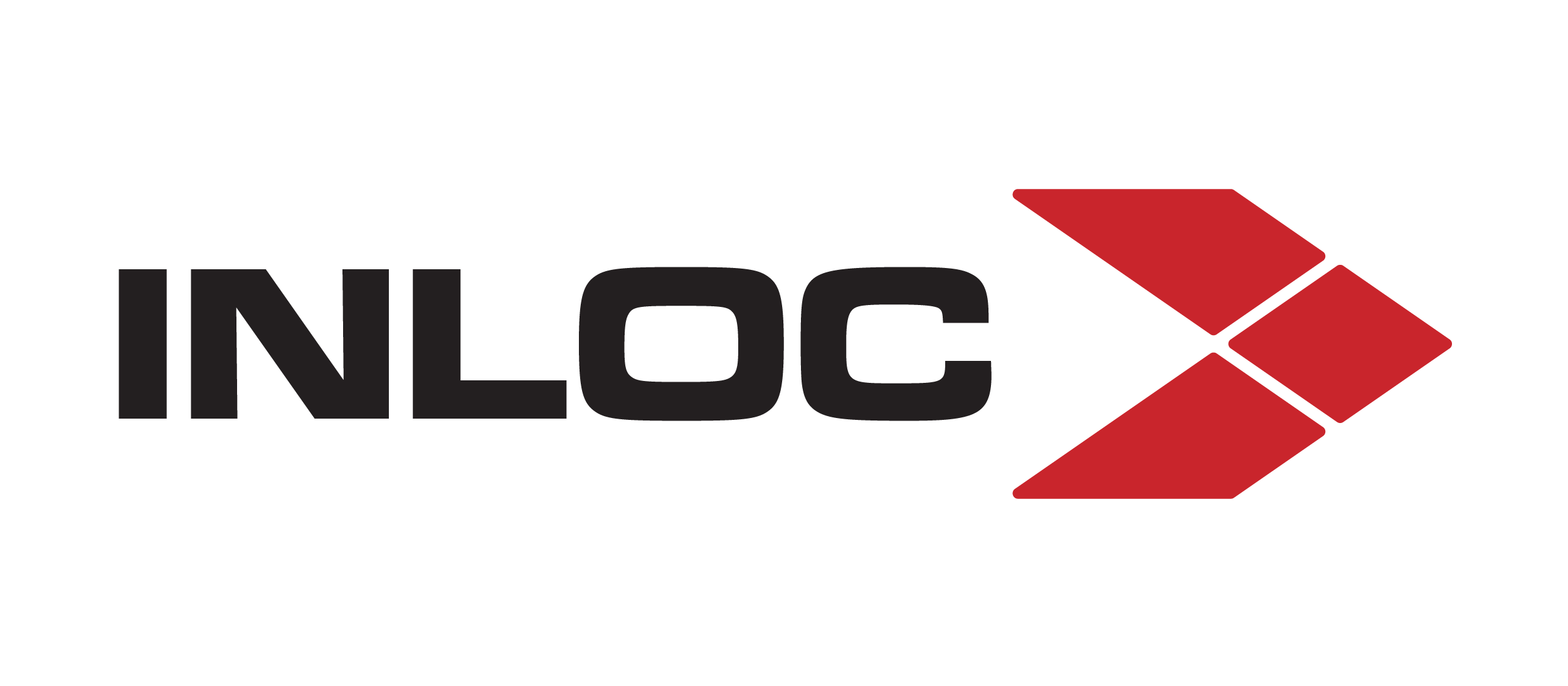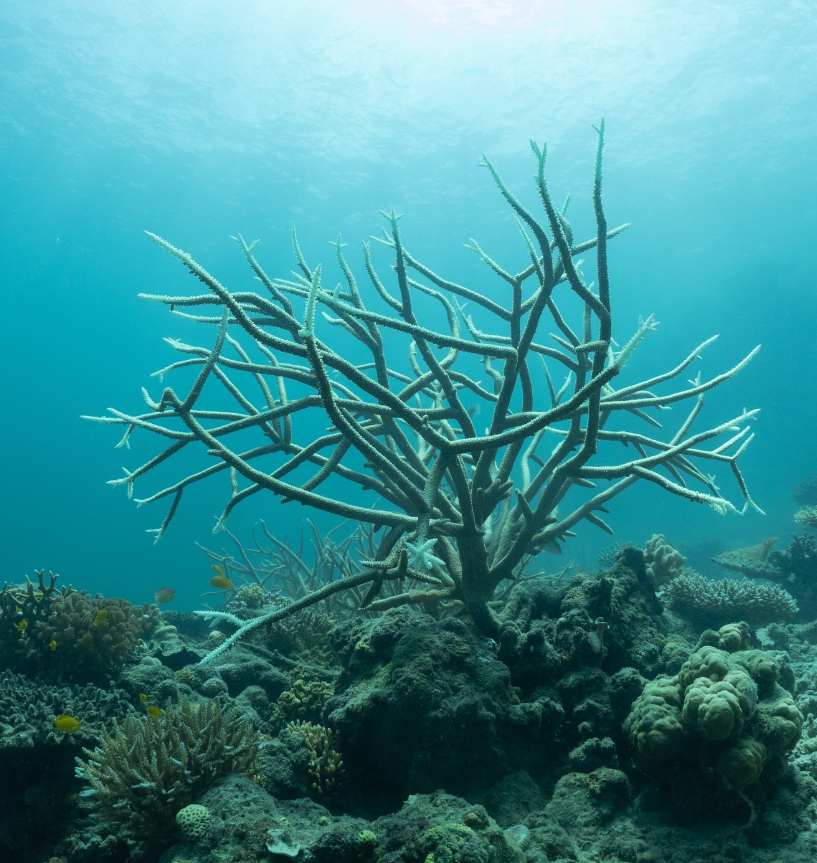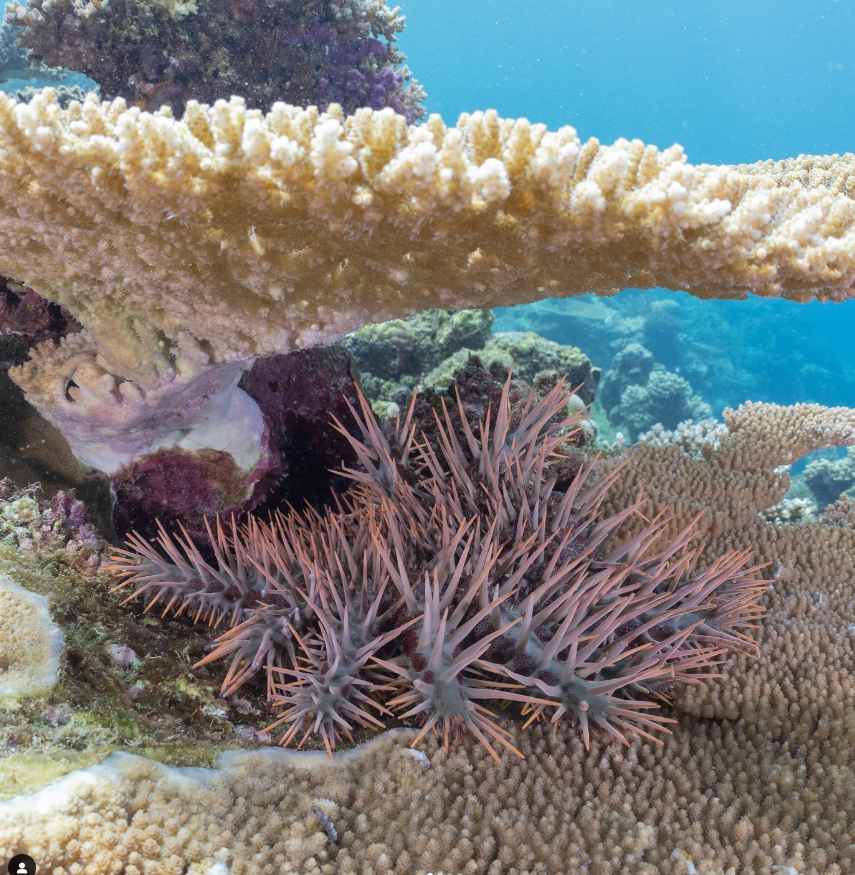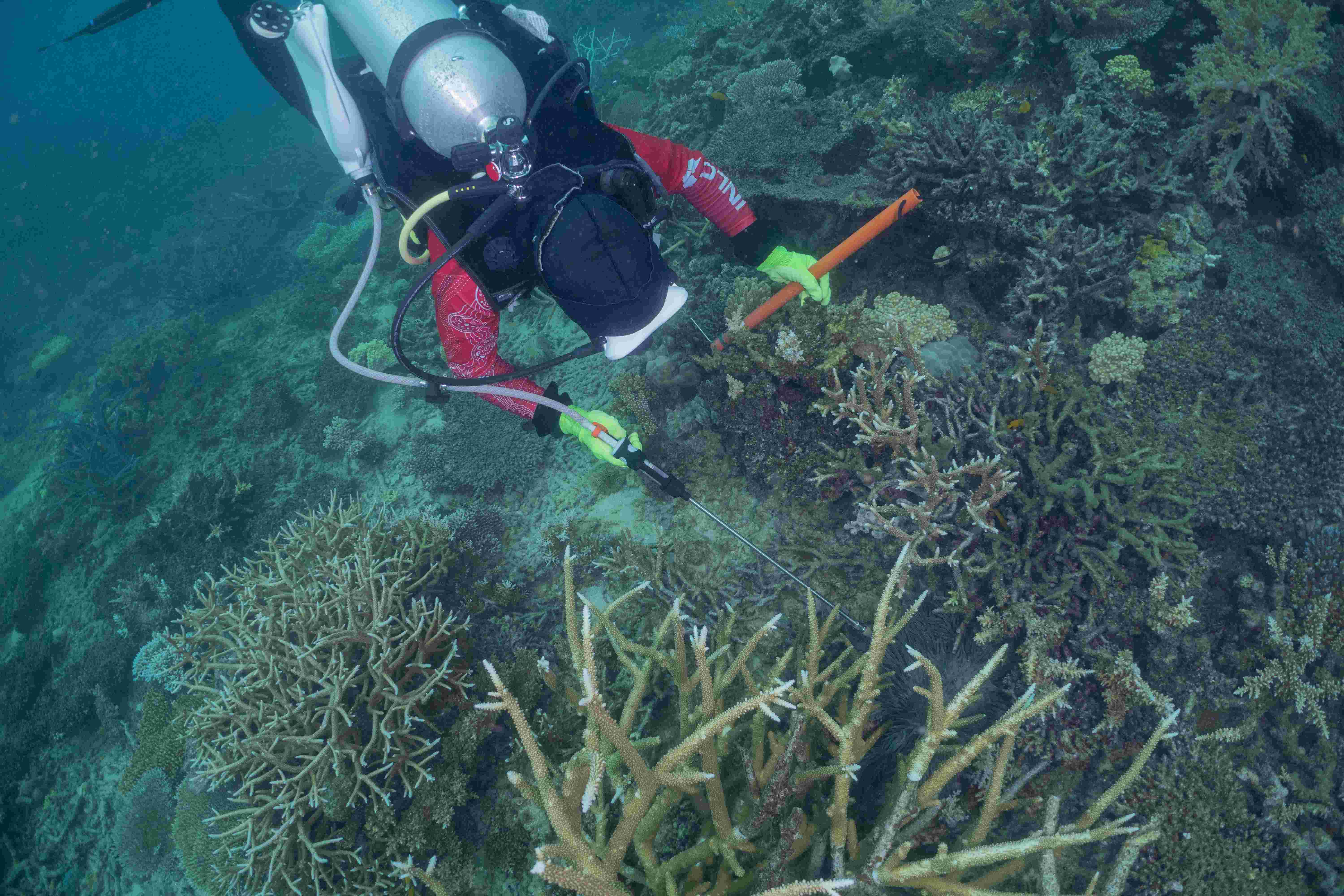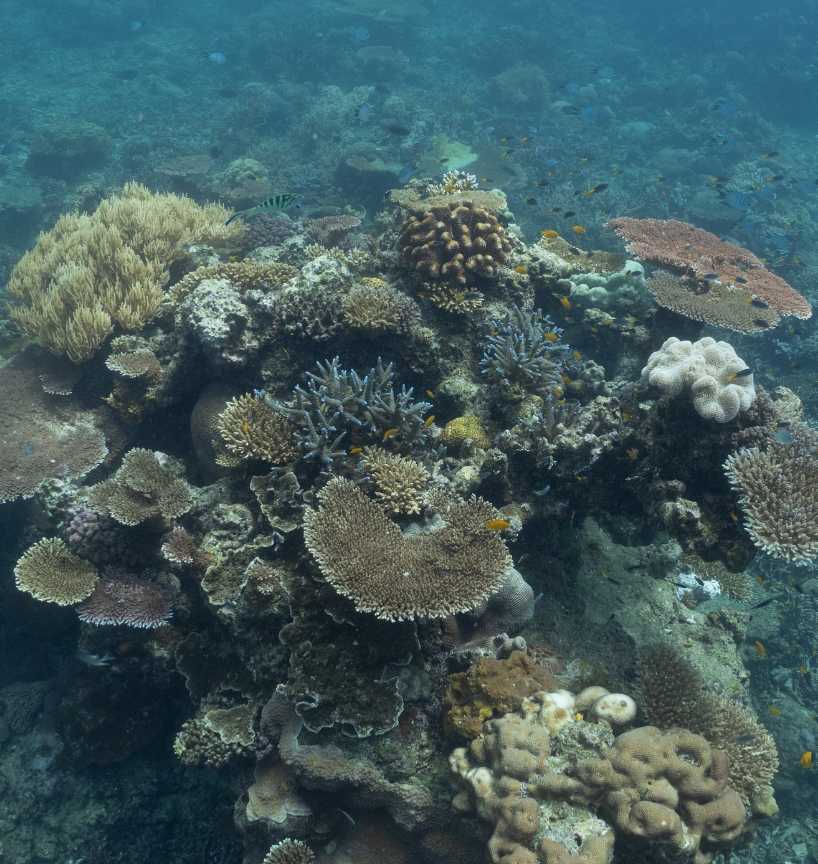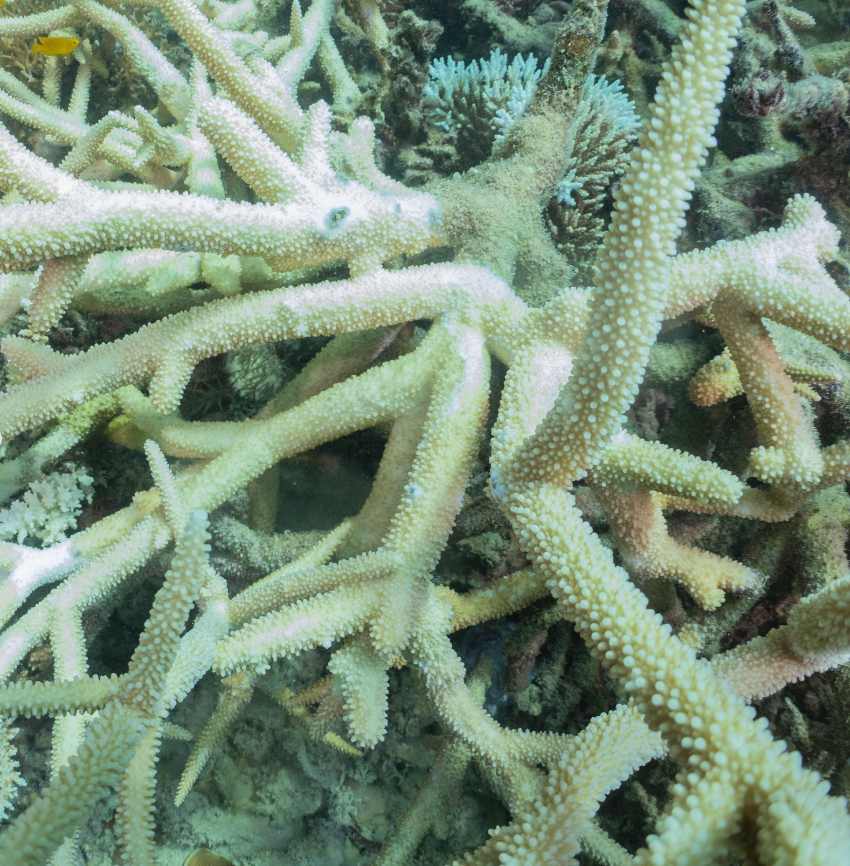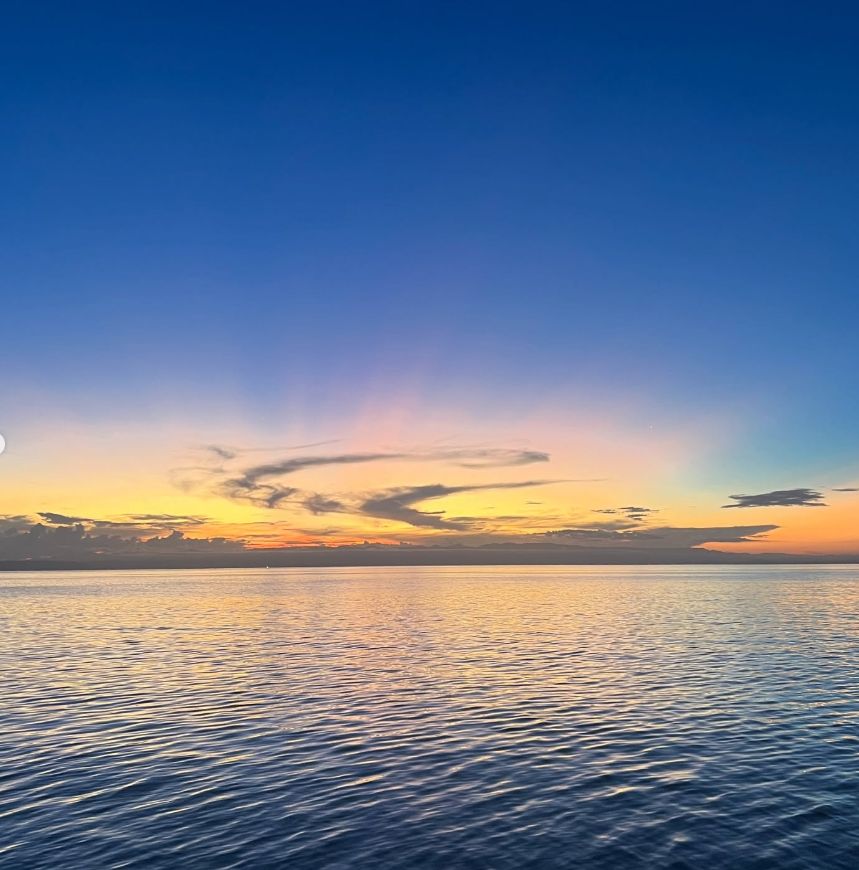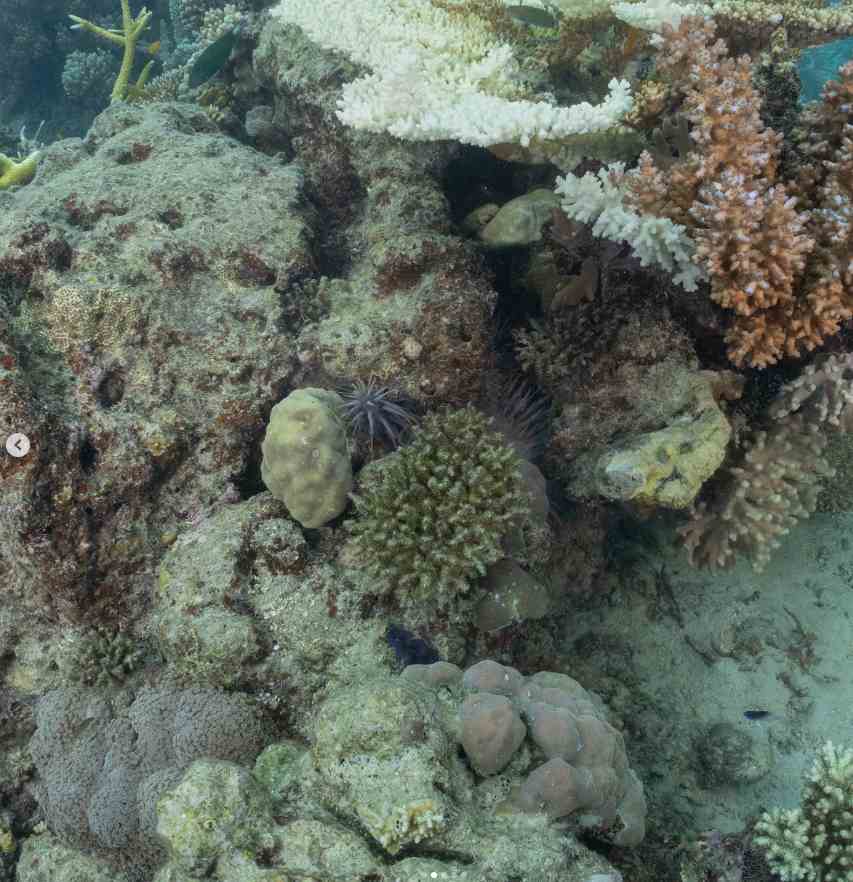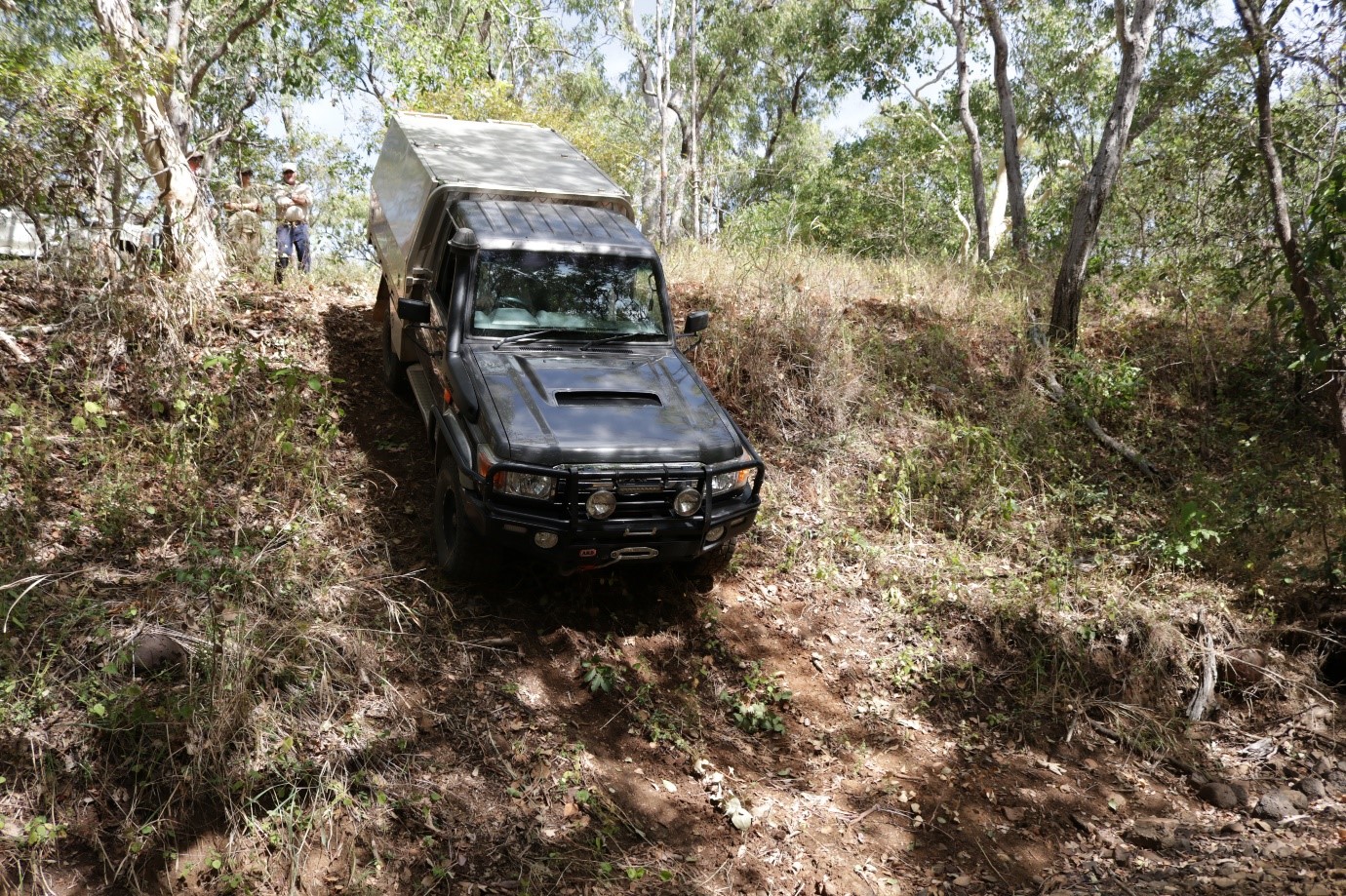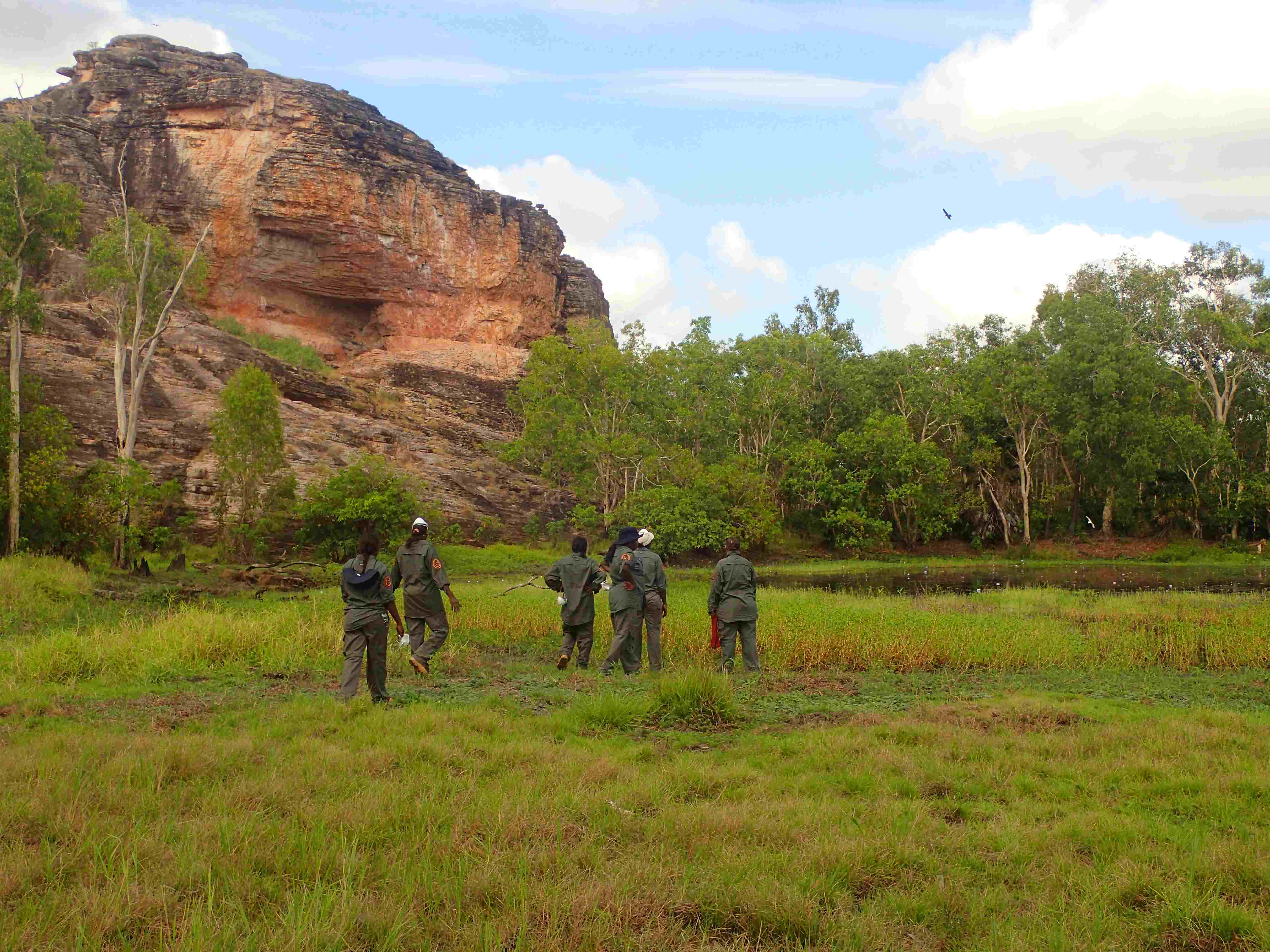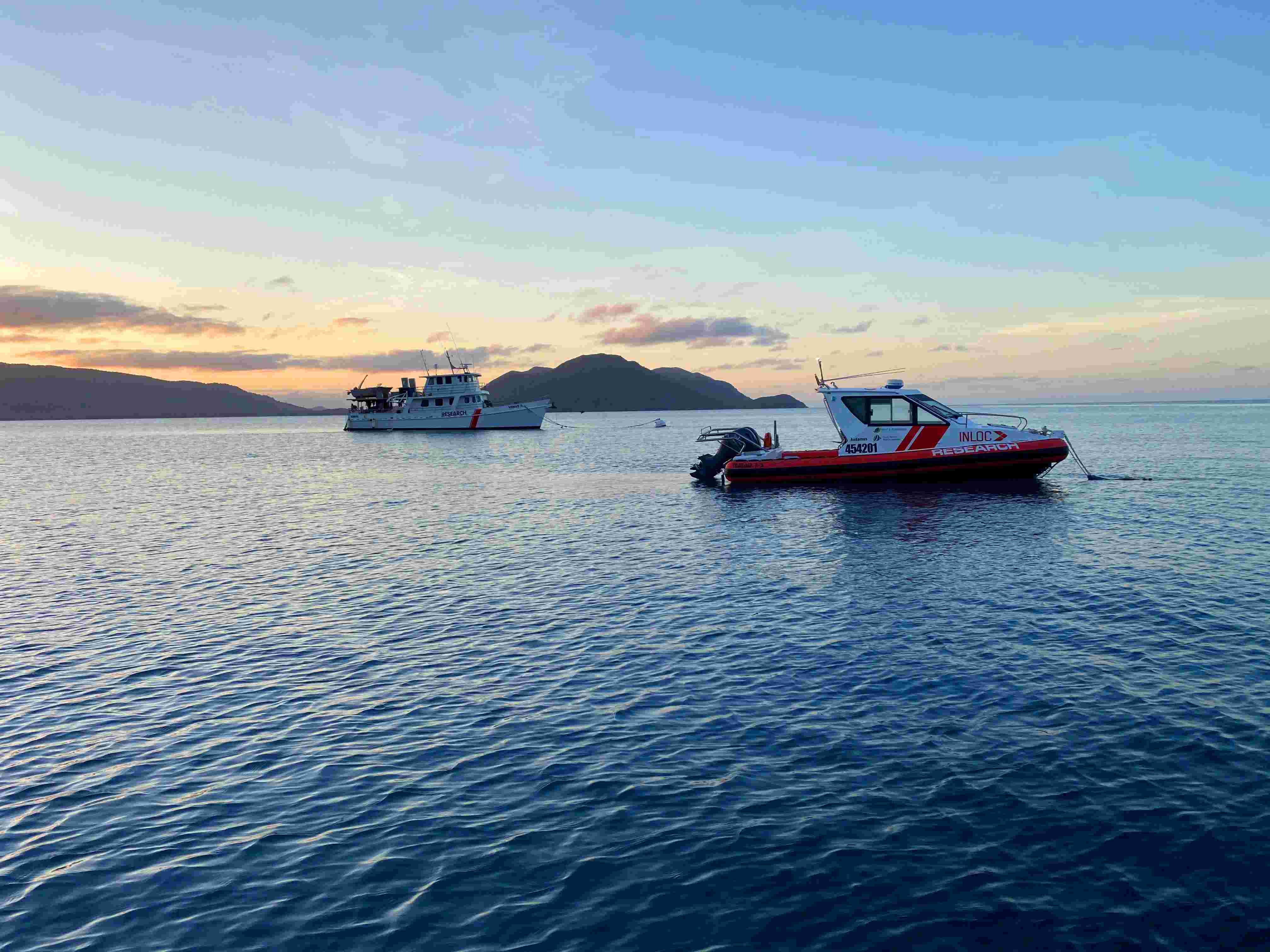Ingrid Martinson – 2024 North American Scholar
Our World-Underwater Scholarship Society
The COTS Problem
Crown-of-Thorns Starfish (COTS) are fascinating creatures – boasting up to 21 spiny arms, they are the only venomous starfish species and are native to Indo-Pacific reefs. Adult COTS, which can grow up to 80cm (~30in) across, feed on coral and can eat up to 10 square meters (around 100 square feet) a year. COTS start as larvae that drift in the water column before settling on the seafloor. Then, in their juvenile stage, they are herbivorous and feed on crustose coralline algae. In 6 months to a year, the juveniles will transition into coral-eating adults. Healthy population levels of COTS contribute to reef diversity by feeding on faster-growing corals, allowing slower-growing species a chance to thrive. However, when COTS populations explode into outbreaks, they become a serious threat to reef health.
The Great Barrier Reef is currently experiencing its fourth major COTS outbreak since the 1960s. Outbreak levels are defined as more than 15 COTS per hectare. Female COTS can release up to 200 million eggs a year, which means that even with low numbers of adults, they can spawn and cause future outbreaks. With warming, pollution, and increasingly intense and more frequent weather events putting stress on coral reefs, these outbreaks are particularly concerning for reef recovery. It is hypothesized that outbreak conditions are created through increased nutrients and the removal of predators. An increase in nutrients (for example, fertilizer washing into the ocean from farmland) can cause phytoplankton blooms; juvenile COTS feed on phytoplankton, so it is thought that an increase in phytoplankton increases survivorship. The removal of fish and invertebrates that eat COTS, especially in their juvenile phase, may also foster outbreak conditions.
The COTS Solution
To address this problem, the Great Barrier Reef Marine Park Authority (GBRMPA) developed a COTS Control Program in 2012, designed to address the threat of COTS outbreaks. The method of culling involves injecting the starfish with bile salt, an effective solution that kills them without harming the surrounding ecosystem. The COTS are injected in a “knuckle”, where an arm meets the body, which aims to deliver the injection into their circulatory system.
Before culling, the COTS control program involves monitoring target reefs to determine if it is necessary to deploy COTS divers in an area. The first step is manta towing surveillance, where a snorkeler is towed behind a boat over an area, recording if COTS or evidence of COTS feeding on corals is seen. If COTS presence is observed, a site becomes identified as “need to cull”, meaning a team of divers needs to get in the water and cull the area. Once this first pass occurs, the Count per Unit Effort (CPUE) is calculated. This means dividing the number of COTS culled by the total number of minutes each diver spent in the water. If this number is less than 0.04, the site is “closed” and no longer needs culling at that time. This means that the number of COTS is sustainable for coral growth and recovery. If the CPUE is greater than 0.04, the site remains “open” and needs to be culled again. A value of 0.08 or greater is at “outbreak” level. A dive team will return after at least a week to give time for the injected COTS to decompose, ensuring the same COTS aren’t being injected again. This cycle of towing, opening, culling, and closing sites continues. Sites that are closed are revisited after around two months, as conditions can change and COTS can move to new areas quickly.
Targeted and timely culling has proven to be an effective strategy for suppressing outbreaks. In some areas, an increase in coral cover (up to 44%) has been observed after COTS removal.
I had the incredible opportunity to spend 20 days at sea with INLOC, participating in the COTS control program. INLOC partners with GBRMPA, the Reef & Raniforest Research Centre (RRRC), and the Great Barrier Reef Foundation to run vessels that cull and monitor for COTS on the Great Barrier Reef.
Day-to-day on a COTS vessel
Each day, all the crew are required to be out of bed by 6:30 am and be ready for a dive briefing at 7:30 am. We reviewed our target sites, conditions, and what to expect for the dives. Then we’d gear up and do four dives, either on SCUBA or freediving. Everyone on the vessel contributes as crew. This meant rotating through different roles each day: cooking duty (making lunch and dinner), moorings (helping with dropping and pulling the anchor), back deck (being lookout during dives, managing tenders while anchoring, and setup/breakdown of COTS equipment), and cleaning (dishes). I really enjoyed getting to learn about the different duties on the boat, and even learned a bit about mechanics, how to run the desalination system, and practiced knot tying.
Coming into this trip, I had very little freediving experience and had recently done my first formal training during my scholarship with Scuba Diving International (SDI). With most of our days being freediving, I got lots of practice on this trip! At first, it was a challenge to get used to diving so much and managing the COTS gun and bottle of bile salts, but by the end of the trip, I felt very comfortable.
The process of diving for COTS was like an underwater scavenger hunt – COTS are nocturnal, so they hide during the day, making them tricky to spot. We meticulously searched every crevice and under every plate coral, looking for telltale signs like scarring on corals or a spiny arm peeking out from a hiding spot. COTS eat coral by digesting coral tissues, which leaves bright white scars behind. At first, these scars can look similar to bleaching, but after a while, it becomes easier to differentiate. Throughout the trip, we saw a wide variety of sites, from barely any COTS to sites at outbreak levels.
We spent most of our time at Batt Reef, located in the Northern Great Barrier Reef. On dives, we were arranged in a line, with the leader being positioned on the reef crest, and the rest of the divers spread out over the reef. The idea is to move at the same pace to make sure each diver is covering their line and not overlapping with others. During dives, each diver was tasked with recording the number and size of the COTS they injected. After dives were completed, the CPUE was calculated, and the data was inputted digitally.
Another separate survey conducted throughout target sites is the Reef Health and Impact Survey (RHIS). This survey collects data on coral cover, including what coral types are seen, the amount of recently dead coral, bleaching, presence of disease, and coral predators. I had the opportunity to learn the RHIS methods and conduct surveys at one site.
All of the data, including the RHIS, COTS, and manta tow surveys, are uploaded into the Eye on the Reef platform, managed by GBRMPA. I got to learn how to use the system to upload survey data. Eye on the Reef also has an app that is available to the public, and anyone can upload observations of wildlife (including COTS), reef health, and incidents.
This systematic approach is central to the Integrated Pest Management (IPM) strategy, applied by the Reef Authority since 2018, allowing us to be both proactive and adaptive. By continually refining our methods and leveraging up-to-date data, INLOC remains at the forefront of efforts to protect the Great Barrier Reef from the ongoing threat of COTS outbreaks.
We saw some incredible wildlife during our dives, including leopard sharks, tawny nurse sharks, spotted eagle rays, loggerhead sea turtles, and dugongs! Seeing a dugong (relative of manatees) was particularly special, as sightings are rare.
Threats on the Reef
Throughout this trip, the many threats the Great Barrier Reef is experiencing were apparent. Some of the sites we visited had high levels of bleaching, with very few coral colonies. The last few decades have seen many mass bleaching events, but this past summer was the hottest on record, causing “catastrophic” bleaching on the reef.
Warming temperatures also mean an increase in the amount and severity of disease on already heat-stressed corals. If current warming trends continue, researchers estimate that the amount of diseased corals globally could rise from the current ~10% to more than 75% by 2100. On our dives, we saw white syndrome, black band, and brown band disease. Seeing this only reinforced the importance of the COTS program in alleviating stress on these coral reefs and the dire need to address the causes of climate change.
On our last dives, our team unexpectedly came across a fishing net choking the reef. Ghost nets are fishing nets lost or abandoned at sea, and they are incredibly dangerous for marine life as they can cause entanglements. They can also cause great damage to the reef by breaking corals and blocking them from sunlight. It is estimated that 640,000 tonnes of ghost gear end up in the ocean every year (approximately the weight of 50 thousand double-decker buses). As most modern nets are made of plastic, they can persist for hundreds of years.
The net we found was completely entangled in coral heads where it was attached, and also left debris on corals around it where it had dragged on the reef. Some of the entangled corals were tiny, smaller than the palm of my hand. We removed the net and spent even more time cutting away the pieces that were covering the corals. After our work was done, we saw small reef fishes swimming around the corals we had removed the net from. It felt really good that we were able to remove the net, hopefully giving the corals it was choking a fighting chance and preventing entanglements of marine life.
It was incredibly rewarding to be part of a program that’s making a tangible difference in the conservation of the Great Barrier Reef. The experience also deepened my understanding of the complex challenges facing coral reefs and the innovative solutions being developed to address them.
Ingrid Martinson – 2024 North American Scholar
Our World-Underwater Scholarship Society
A huge thank you to INLOC and the RRRC for their support and collaboration with the Our World-Underwater Scholarship Society. Thank you to the entire Capricorn Star crew for welcoming me, taking the time to teach me about COTS operations, and for all the amazing memories!
Thank you to the Our World-Underwater Scholarship Society and our sponsor Rolex for making this scholarship experience possible. I would also like to thank Reef Photo and Video, Nauticam and Light and Motion for my underwater camera setup as well as Aqualung, Fourth Element, Suunto, Halcyon, and DUI for my diving equipment.

